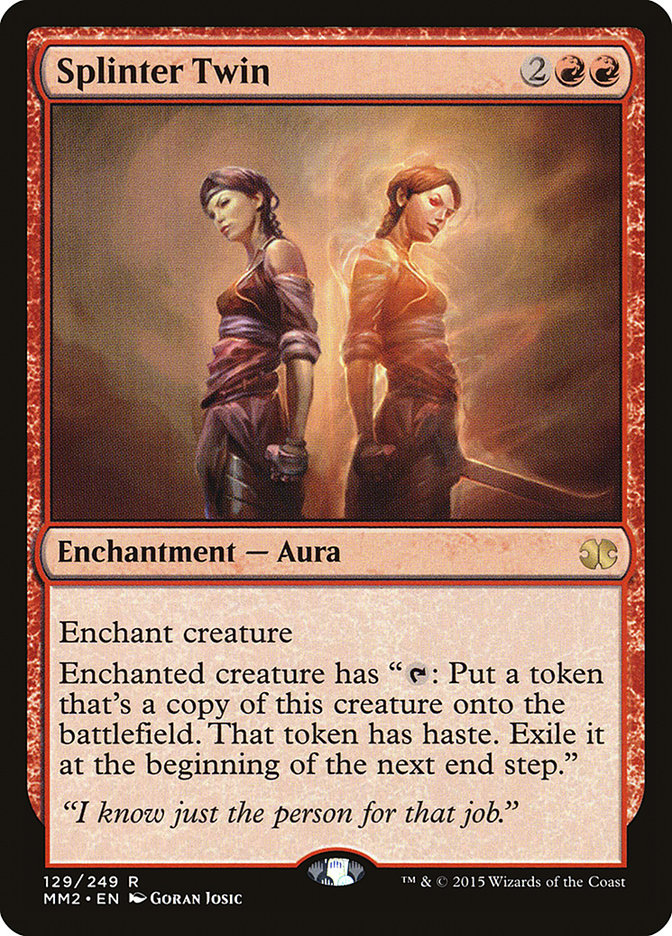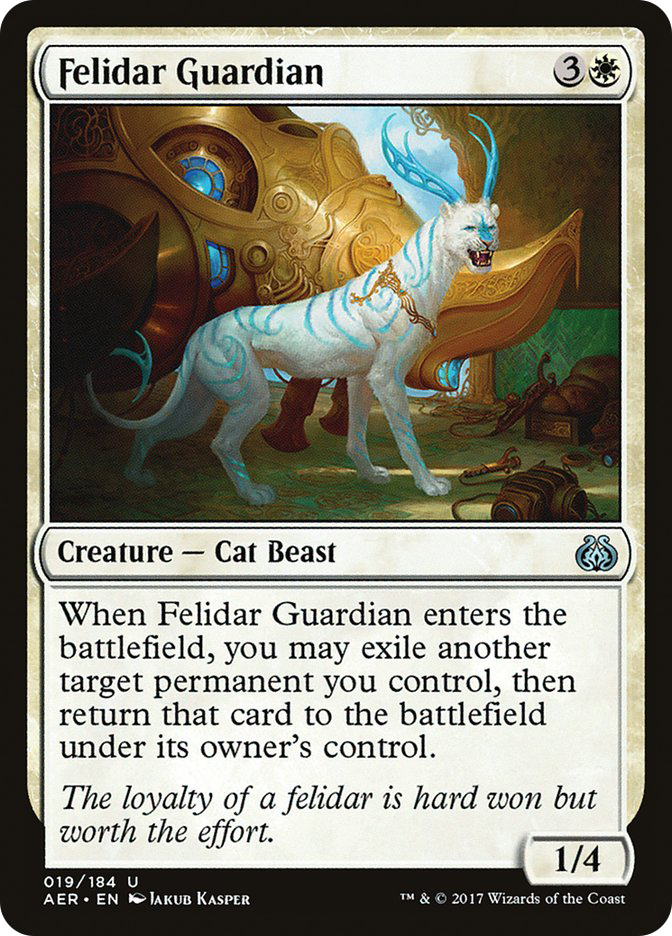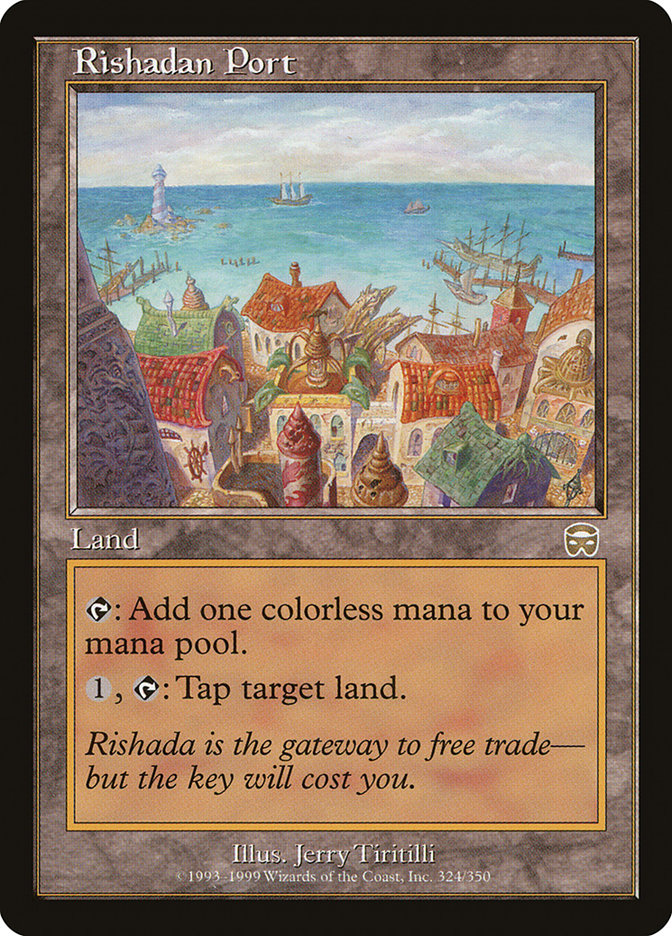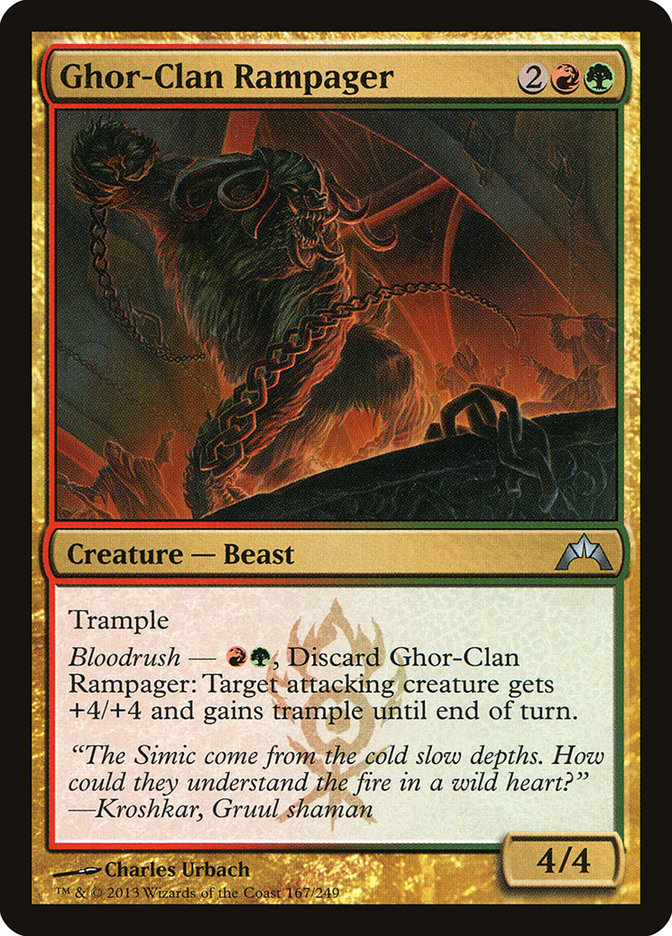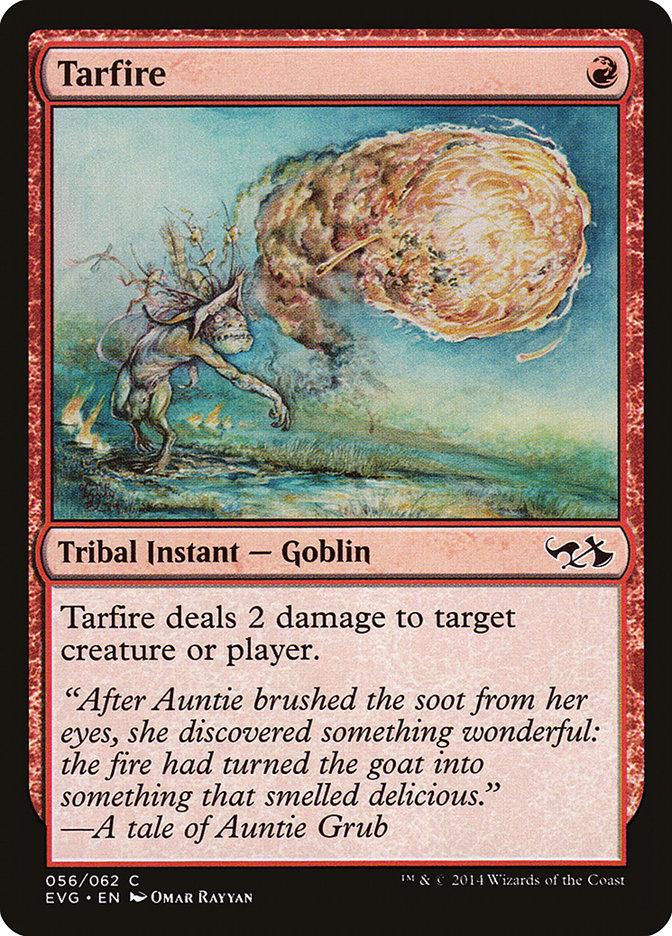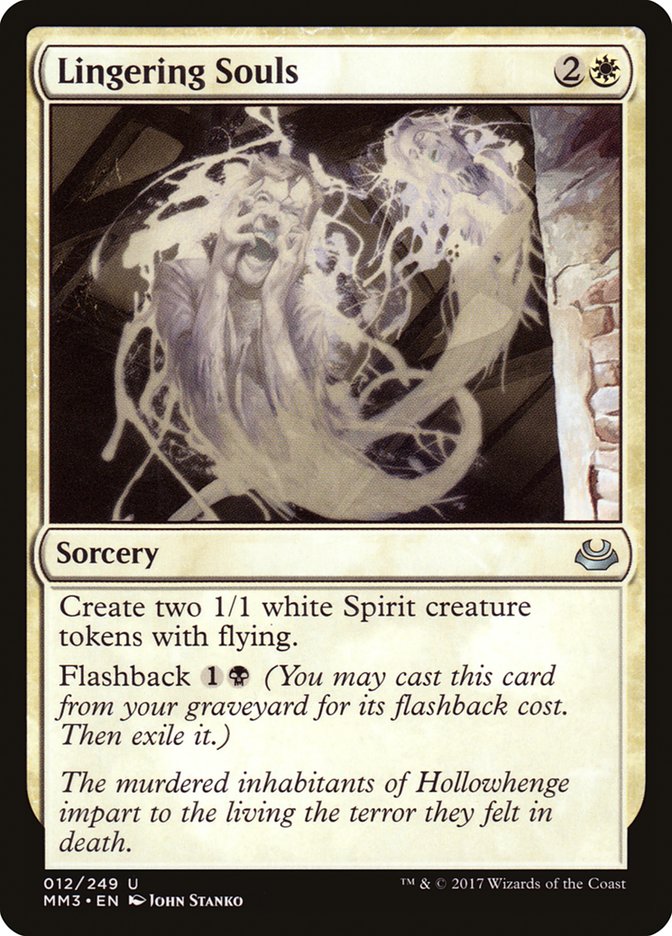Class dismissed, good talk, see everyone next week!
Well, despite my best intentions, it appears that was only approximately
fifteen words (much lower than my usual two or three thousand) and won’t
suffice for an entire article. All this means is that I’m going to have to
back my statement up with facts before dropping the microphone.

I’m a master of photoshop.
Last weekend at #SCGINDY I
had
some laughs
,
some more laughs
, and a little bit of success with the help of Modern’s most undercosted
13/13.
Creatures (15)
Planeswalkers (2)
Lands (18)
Spells (25)

Despite flailing and not doing so hot in the Open, I was fortunate enough
to do well for myself in the 300 (!!) person Classic and am quite happy
with the deck.
Last week
I mentioned needing to get an enormous number of reps with Death’s Shadow
to be reasonably proficient when piloting the deck, and after about 100
matches on Magic Online, an Open, and a Classic (playing all of the rounds
of each), I think that I can finally say I’m starting to get a real feel
for the deck.
It’s frightening.
There are things that this deck does that I haven’t seen since (you guessed
it!) Splinter Twin was legal. One-of creatures make sense because of
Traverse the Ulvenwald’s inclusion, that backdoor combo with Temur Battle
Rage sticks out a bit, and the white splash in the sideboard makes a bit of
sense. Looking at decklists, there are things that just don’t pop out at
first glance. Play patterns aren’t always apparent, doubly so when it’s the opponent’s play patterns.
As my number of games with the deck climbed, something just wasn’t sitting
right with me. I’m by no means someone who belongs in a group of the
best-of-the-best in Magic, but I know I’m pretty reasonable at this game.
That translates to me oftentimes being able to see what the ‘right’ play
for my opponent would be. People would regularly make blocks in combat that
I didn’t understand. Many players were keeping back extra creatures that
they actually needed and wouldn’t reduce my life total to a place where
they otherwise should.
At first I wrote it off. “They can’t possibly know all of the cards in my
hand, so in a case of me having X variables, this is probably correct for
them.” “Perhaps they’re playing
wanna maximize the power of it. That’s pretty cool.”
Eventually I realized what was going on: People were playing scared. My
opponents were hemorrhaging value in an alarmingly high number of games.
Too often players were afraid of letting me (as the Death’s Shadow player)
fall to single-digit numbers of life without actually putting the
nail in the coffin
, so-to-speak.
About That Splinter Twin
For anyone who didn’t play Modern while Splinter Twin was legal, it was a
combo deck that would make an infinite number of Pestermite, Deceiver
Exarch, or Bounding Krasis before attacking with the infinite number of
hasted creature tokens.
Creatures (11)
Lands (23)
Spells (26)

Due to the creatures in the combo all having flash, many decks would be
stuck in a cycle of holding up mana, unsure if the opponent had the combo
or not. A common line of play involved the Splinter Twin pilot casting a
Deceiver Exarch or Pestermite on their opponent’s end step (before their
own fourth turn) and tapping down a mana source. When the Splinter Twin
player untaps on their fourth turn, they play a fourth land and Splinter
Twin for game.
Fortunately, Development learned from their mistake. For a few years or so.
This combo led to a high number of players playing piles of single-mana
answers to Pestermite, Splinter Twin, and Deceiver Exarch.

This wasn’t always good enough, unfortunately. For the player who is trying
to consistently keep their bases covered against the combo, they have to
leave up a mana every single turn, whether the opponent actually has the
combo or not. Because hands are concealed information, it’s near-impossible
to tell if the opponent was just casting a Deceiver Exarch for the sake of
developing the battlefield or if they were getting themselves in a position
to combo.
Over the course of an entire game, this means that the Splinter Twin deck
would effectively get a free Stone Rain-esque effect for no other reason
than the fact that people were afraid of dying to Splinter Twin out of
nowhere. Sometimes it was even worse:

If the answer to the combo were to cost two mana, it required the caster to
hold up two lands every turn. It effectively pushed a number of mid-to-high
mana threats into being almost unplayable. It’s hard to justify tapping out
for Huntmaster of the Fells when the follow up might be 40,000 Pestermites.
Further, it’s hard to justify threats when you may have to tack extra mana
onto their mana cost against the most popular deck in the format (in order
to represent an answer to the Splinter Twin combo).
How did Splinter Twin react to people always being so ready for the combo?
They sideboarded it out.
To further exacerbate the advantage that Splinter Twin decks would gain
from players refusing to use all of their mana every turn, Splinter Twin
would just sideboard the Splinter Twins out of their deck for tempo- or
midrange-oriented threats and press the hole in the opponent’s game plan.
Who needs a combo kill when you can just use a sub-par fair game to kill
them the ol’ fashioned way?
Creatures (15)
Lands (22)
Spells (23)

Creatures (12)
Lands (23)
Spells (25)

As the format evolved to compensate for Splinter Twin, variants of the deck
that had a better fair game evolved and took advantage of the mana shortage
the decks would find themselves in. Do you respect the combo or do you
effectively fight Tarmogoyf and Tasigur, the Golden Fang? It’s an
unbelievably difficult needle to thread.
About That Death’s Shadow
People are playing against Death’s Shadow in the same way that they would
play against Splinter Twin or Infect. Because these decks feel the need to
answer every threat as soon as possible (or run the risk of instantly
dying), many decks are effectively working towards winning the game.
Last format’s Death’s Shadow Aggro is tainting people’s perception of this
format’s Death’s Shadow decks.
Creatures (13)
Planeswalkers (2)
Lands (18)
Spells (27)

Writing in-depth about the details of this deck feels a bit like beating a
dead horse, but if you haven’t read any of the pieces on the deck, I
strongly recommend Gerry Thompson’s
article from last week
, Sam Black’s
article from last week
, and my piece that I linked to earlier in the article.
The part that is relevant in this context is that this is a fair deck that
has a backdoor combo (the combo is just Temur Battle Rage + big creature).
Many games are won because of what people are afraid of happening, and not
knowing what will happen if they are wrong. More than one of my opponents
last weekend were under the impression that the deck still played Become
Immense and was more reliant on the combo kill than the current iteration
of the deck.
It’s easy to say “it’s unlikely that they have one of the one-to-two Temur
Battle Rages” in their deck, but is it as easy to say that and then put
your money where your mouth is when calling it wrong means the game ends on
the spot?

Part of the issue with playing against Death’s Shadow is there is a lot of combat math. Trying to figure out what combination of cards
the opponent has that can kill you can be stressful sometimes, particularly
when multiple Death’s Shadows or Tarmogoyfs get involved. If the Death’s
Shadow pilot Tarfires themselves, it can grow each Death Shadow and
Tarmogoyf by +2/+2. Growing multiple Death’s Shadows can get pretty insane
when Kolaghan’s Command gets involved. Shocking oneself and returning
Street Wraith from the graveyard to hand can add eight points of damage to
an attack from two Death’s Shadows. Then if there is a Ghor-Clan Rampager,
it can make it feel pointless to even block in the first place.
The complexity of these lines and the amounts that damage can vary from
card combination to card combination makes it feel pointless to try and
measure up everything the opponent can have, or to win in combat at all.
This leads to a higher-than-average number of players both chump-blocking
when it is disadvantageous and people who are unwilling to even try to
double-block creatures.
Properly Combating Death’s Shadow
Towards the end of Splinter Twin’s reign in Modern, the phrase “keep em
honest” became more and more common. Eventually people just began accepting
their fate and saying “well, I need to be able to develop my battlefield to
beat you, so if I’m dead this turn, that’s just the way it is.” Combating
Death’s Shadow requires a similar approach. Being reckless isn’t
reasonable, obviously, but there comes a point where chump-blocking a 4/4
Death’s Shadow at 17 life is likely unreasonable.
Because of all the ways that Death’s Shadow has to grow its own creatures,
it is regularly correct to treat the deck as one would treat Infect during
combat. That’s to say that interacting with the creatures before they’ve
dealt combat damage (on their controller’s turn) is likely wrong. Despite
Death’s Shadow not having many protection spells, if they have the ability
to attack with multiple creatures in a single turn, it is better to go to a
lower life total for safety’s sake as opposed to dying when tapping out for
a removal spell on one of their threats.
If Death’s Shadow remains popular in Modern (it should, I believe it is the
best deck in the format by a fair margin), the best tools to combat it are
removal spells that aren’t contingent upon power and toughness. While
waiting around for the Top 8 of the Modern Classic, Ryan Overturf and I
were talking about the matchup my deck had against his:
Creatures (15)
Lands (19)
Spells (26)
- 4 Lightning Bolt
- 2 Mana Leak
- 4 Serum Visions
- 1 Terminate
- 4 Spell Snare
- 4 Thoughtseize
- 4 Thought Scour
- 1 Kolaghan's Command
- 2 Fatal Push
Sideboard

It was strange but made sense when he made the comment “The first card out
is Lightning Bolt. I don’t really care for Lava Spike and it being an
instant doesn’t make it much better.” Burn spells are quite poor against
the newest version of Death’s Shadow, and removal spells in the same vein
as Dismember fall into that camp as well. It’s better to look at hard
removal spells like Go for the Throat and Path to Exile, or at least cards
that care more about converted mana cost than toughness, a la Fatal Push.
Similar to Splinter Twin, Death’s Shadow has a backup plan for post-board
games and can shift to a more threat-dense and resilient strategy. Be it
via Lingering Souls, Ranger of Eos, or other cards, Death’s Shadow can
remove Ghor-Clan Rampager, Temur Battle Rage, and other aggressive cards to
steel itself for an onslaught of removal from opponents. The best way to
combat these strategies is likely with one of the three-color midrange
strategies that hang out Modern. I played against a Mardu strategy in the
Open. Despite my being able to make a game of it, it felt as if the entire
match was an uphill battle (before I succumbed to wave of Planeswalkers,
removal, and Lingering Souls tokens).
It may be time for Jeskai Nahiri to make a resurgence. Lingering Souls is a
beating for the deck, but Snapcaster Mage being coupled with removal and
Nahiri’s utility against the deck isn’t something I’m wont to write off
without giving serious consideration.
In short, there isn’t an incredibly easy answer on how to combat Death’s
Shadow. It just feels like the newest and most effective version of Jund. A
bit less fair, but incredibly disruptive, punishing, and consistent. Rest
in Peace is the most obvious hate card, and Chalice of the Void is a
beating. It’s also entirely reasonable that decks will adjust with more
adequate removal and push Death’s Shadow out of the format.
Modern is expensive, and we can’t always afford this week’s newest tech
from the internet, but we can understand how to best equip ourselves to
fight the newest technology and not give up more percentage points than
necessary. The more games played with and against Death’s Shadow that you
play, the more you will understand the deck–and the fewer games you will
lose to sloppy combat steps.
Figure out the exact life totals that you can reduce Death’s Shadow to
(before needing to finish them in a single burst), determine the best ways
to combat the white splash from the deck, and increase your deck’s
maneuverability on the opponent’s turn in order to reduce the large
creature’s potency.
Get better. Be better.


